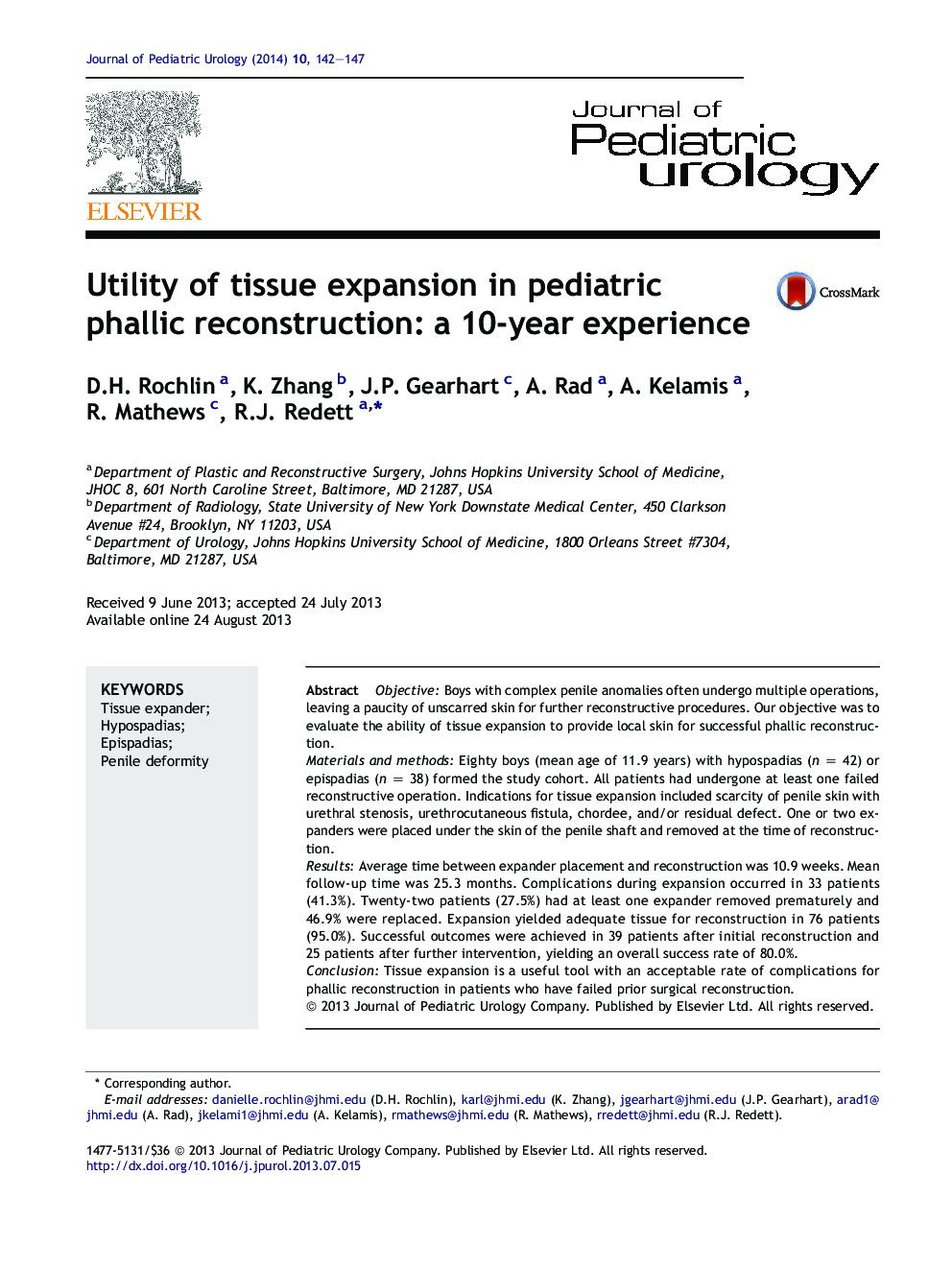| Article ID | Journal | Published Year | Pages | File Type |
|---|---|---|---|---|
| 4162974 | Journal of Pediatric Urology | 2014 | 6 Pages |
ObjectiveBoys with complex penile anomalies often undergo multiple operations, leaving a paucity of unscarred skin for further reconstructive procedures. Our objective was to evaluate the ability of tissue expansion to provide local skin for successful phallic reconstruction.Materials and methodsEighty boys (mean age of 11.9 years) with hypospadias (n = 42) or epispadias (n = 38) formed the study cohort. All patients had undergone at least one failed reconstructive operation. Indications for tissue expansion included scarcity of penile skin with urethral stenosis, urethrocutaneous fistula, chordee, and/or residual defect. One or two expanders were placed under the skin of the penile shaft and removed at the time of reconstruction.ResultsAverage time between expander placement and reconstruction was 10.9 weeks. Mean follow-up time was 25.3 months. Complications during expansion occurred in 33 patients (41.3%). Twenty-two patients (27.5%) had at least one expander removed prematurely and 46.9% were replaced. Expansion yielded adequate tissue for reconstruction in 76 patients (95.0%). Successful outcomes were achieved in 39 patients after initial reconstruction and 25 patients after further intervention, yielding an overall success rate of 80.0%.ConclusionTissue expansion is a useful tool with an acceptable rate of complications for phallic reconstruction in patients who have failed prior surgical reconstruction.
